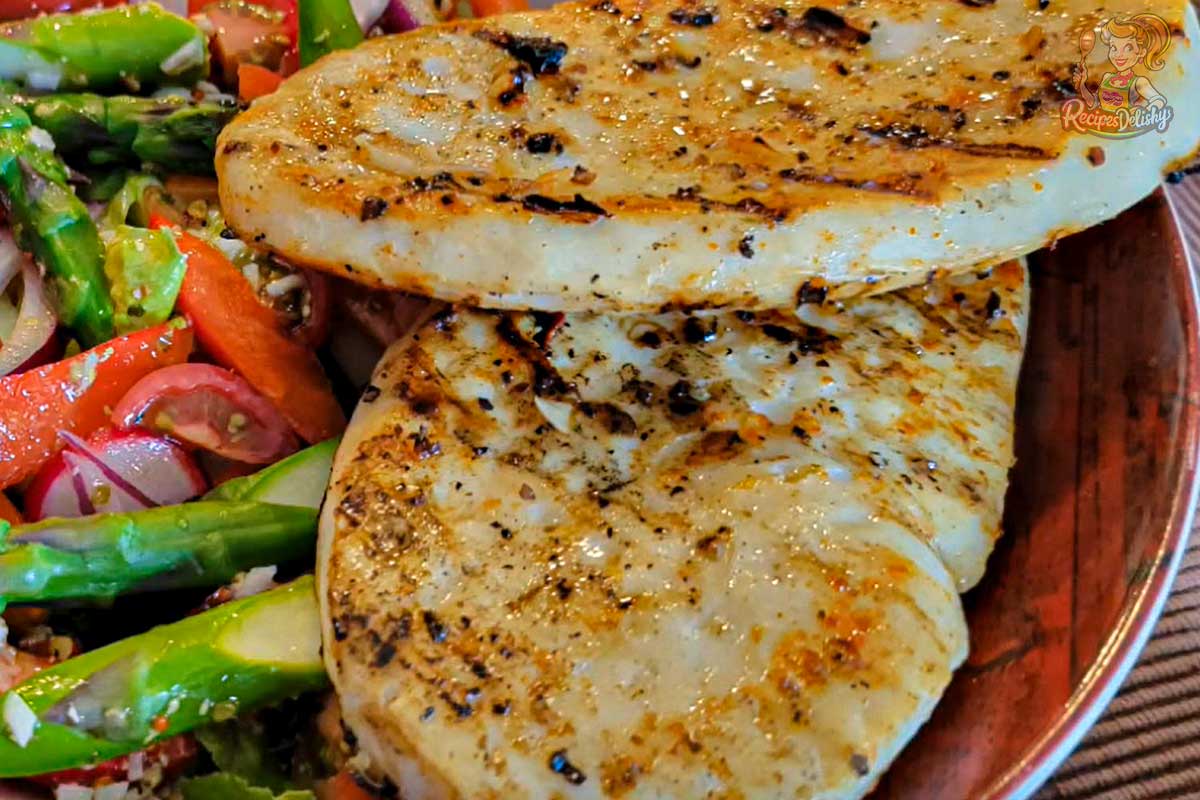Introduction to Calamari Steaks
Welcome to our comprehensive guide on Calamari Steak Recipe, where we’ll delve into everything you need to know about preparing this exquisite seafood dish. From the basics of what calamari steak is to the varied methods of cooking it, this article promises to equip you with all the culinary knowledge and inspiration you need. Whether you’re a seasoned chef or a curious novice, these insights will help you master the art of cooking calamari steak, ensuring tender and flavorful results every time.
What is Calamari Steak?
Calamari steak refers to the body of the squid, flattened and tenderized into thin, steak-like pieces. Unlike the more common rings, these steaks offer a substantial texture that stands up well to various cooking methods. Known for its mild flavor and firm texture, calamari provides a perfect canvas for a range of seasonings and sauces.
Benefits of Calamari Steak
Opting for calamari steak isn’t just about enjoying a delicious meal; it’s also a healthy choice. Calamari is packed with protein, low in calories, and rich in essential vitamins and minerals, such as Vitamin B-12 and iron, which are vital for maintaining good health. Moreover, its versatility in recipes makes it a fantastic alternative to traditional meats.
Different Ways to Prepare Calamari Steak
Calamari steaks can be transformed into a gourmet meal with just a few tweaks in the cooking process. Here, we explore several methods to prepare these steaks, each providing a unique twist on this seafood delight.
- Pan Fried Calamari Steak Pan frying is a quick and easy method to achieve a golden, crispy exterior while keeping the inside tender and juicy. A simple dredge in seasoned flour can elevate the natural flavors of the calamari.
- Grilled Calamari Steak Grilling imbues the calamari with a smoky richness that is hard to resist. Marinating the steaks beforehand can add depth to the flavor profile, making each bite a delectable experience.
- Air Fryer Calamari Steak For a healthier alternative, cooking calamari steaks in an air fryer reduces the need for excess oil without compromising on the crispy texture that makes these steaks so appealing.
In each of these methods, careful attention to cooking times is crucial, as calamari can become tough if overcooked. By following these guidelines, you’ll ensure that your calamari steaks are always tender and delicious.
Preparing Your Calamari Steak
Ingredients Overview
To start, you’ll need a few essential ingredients to bring out the best in your calamari steak. Fresh calamari steaks are the star of the show, so ensure they’re sourced from a reputable supplier. Accompanying the steaks, you’ll need eggs, flour, and breadcrumbs for a basic setup, with variations depending on the specific recipe.
Step-by-Step Cooking Instructions
Let’s dive into the delicious world of calamari steak preparation, with detailed steps for several popular recipes.
- Calamari Steaks in Lemon Butter Begin by seasoning the calamari steaks with salt and freshly ground pepper. Start by adding a splash of olive oil to a skillet heated over medium heat. Place the steaks in the skillet and let them sizzle for about two minutes on each side until they turn a beautiful golden brown. Remove the steaks and add a dollop of butter, a squeeze of fresh lemon juice, and a hint of garlic to the pan. Pour this zesty lemon butter sauce over the steaks just before serving.
- Lemon Caper Calamari Steaks For a tangy twist, season your calamari steaks and pan-fry as above. In the same pan, add a touch of olive oil, capers, and a sprinkle of lemon zest for an extra burst of flavor. This sauce pairs wonderfully with the mild taste of calamari, offering a refreshing contrast.
- Grilled Calamari Steaks with Mediterranean Salsa Marinate the calamari steaks in olive oil, lemon juice, and herbs. Grill them until they are thoroughly cooked and slightly charred, about three to four minutes per side. Top them with a salsa made from chopped cherry tomatoes, kalamata olives, and a drizzle of extra virgin olive oil for a Mediterranean flair.
- Spicy Grilled Calamari Steaks Inject some heat by marinating the calamari in a mixture of lemon juice, garlic, and a pinch of cayenne pepper. Grill as suggested, ensuring a crisp exterior. Serve with a side of light aioli or a yogurt-based dip to balance the spice.
Tips for Perfect Calamari Steaks
- How to Tenderize Calamari Steaks Tenderizing calamari is crucial to avoid a rubbery texture. You can gently pound the steaks with a meat mallet or score them lightly on one side. This not only helps in cooking them evenly but also allows the marinades and seasonings to penetrate deeper.
- Cooking Times and Temperatures Calamari steaks cook quickly, and the key to succulent steaks lies in short cooking times. Whether you’re pan-frying or grilling, never cook calamari for more than two to three minutes per side. High heat is essential to sear the outside while keeping the inside tender.
These cooking tips and recipes will help you create mouth-watering calamari steaks that are sure to impress at any dining table. Let’s now delve into some common questions about preparing calamari to ensure you have all the culinary knowledge you need.
Serving and Presentation Ideas
Creative Serving Suggestions
The way a dish is presented plays a crucial role in elevating the dining experience. Here are some innovative ways to serve your calamari steaks that can impress guests and make your meals even more enjoyable:
- Citrus and Herb Garnish Top your calamari steaks with finely chopped herbs such as parsley or dill and a few thin slices of lemon or lime. This not only adds freshness but also a visually appealing contrast to the plate.
- Bed of Greens Serve the calamari on a bed of mixed greens, such as arugula and spinach, lightly dressed with olive oil and balsamic vinegar. The peppery taste of the greens complements the mild flavor of the calamari perfectly.
- Accompanying Dips Offer a variety of dips, such as aioli, tartar sauce, or a spicy tomato salsa. Dips can add a burst of flavor and allow diners to customize their taste experience.
Plating Techniques
Plating your calamari steaks thoughtfully can elevate the dish from simple to spectacular. Consider these tips:
- Color Contrast Use colorful vegetables like cherry tomatoes or bell peppers to add vibrancy to the plate. This not only makes the dish more attractive but also more appetizing.
- Asymmetrical Arrangement Rather than centering the calamari steak, place it off-center and arrange accompanying items like lemon wedges or sauce decoratively around it. An asymmetrical presentation often looks more modern and artistic.
- Edible Garnishes Garnish with edible flowers, caper berries, or sprigs of fresh herbs for a touch of elegance that suggests careful attention to detail.
By focusing on the presentation and serving of calamari steaks, you can turn a simple meal into a memorable dining experience. This section not only adds depth to your article but also provides practical tips that readers can easily implement at home.
Nutritional Benefits and Dietary Considerations
Health Benefits of Calamari
Calamari is not only delicious but also offers numerous health benefits, making it a great addition to a balanced diet. Here’s why incorporating calamari steak into your meals can be a healthful choice:
- High in Protein, Low in Fat Calamari is an excellent source of high-quality protein while being relatively low in fat. This makes it an ideal option for those looking to maintain or achieve a healthy weight.
- Rich in Vitamins and Minerals It is packed with essential nutrients, including Vitamin B-12, selenium, and iron. These contribute to improved nerve function, enhanced immune response, and better blood health.
- Omega-3 Fatty Acids Like many seafoods, calamari contains Omega-3 fatty acids, known for their role in heart health and inflammation reduction.
Dietary Considerations
When preparing and serving calamari steak, it’s helpful to consider various dietary needs to make your dishes as inclusive as possible:
- Gluten-Free Options For a gluten-free version, use almond flour or crushed gluten-free crackers instead of traditional breadcrumbs for coating the calamari.
- Low-Carb Serving Suggestions Serve calamari steaks over a bed of sautéed vegetables instead of grains or pastas to cater to low-carb dietary preferences.
- Allergen Awareness As seafood, calamari can be an allergen. Always ensure your guests are aware of the ingredients in your dishes, especially when serving to a new audience.
Frequently Asked Questions About Calamari Steak Recipe
How to cook calamari steak from Costco?
When cooking a calamari steak from Costco or any other bulk retailer, the process remains largely the same as with fresh calamari. Thaw the steaks if frozen, pat them dry to remove excess moisture, and season to your liking. Pan-frying or grilling works well for these pre-packaged steaks, ensuring a quick cook on high heat to maintain tenderness.
Do calamari steaks need to be tenderized?
Yes, tenderizing calamari steaks is often recommended to prevent them from becoming too tough. Use a meat mallet gently or score the surface of the steak lightly. This not only helps in cooking them evenly but also enhances their ability to absorb flavors from marinades and seasonings.
How are calamari steaks made?
Typically, chefs make calamari steaks from the body of the squid by slicing it open, flattening it out, and then tenderizing it to create uniform steaks. For more detailed insights, read about how are calamari steaks made on RecipesDelishy. This process makes the squid’s meat suitable for quick, high-heat cooking methods, ensuring it cooks evenly and stays tender.
How do you cook calamari so it is not tough?
The key to cooking calamari without it becoming tough is managing the cooking time and temperature. Calamari should be cooked quickly over high heat. Whether you are grilling, pan-frying, or even air frying, keep the cooking time short, usually no more than two to three minutes per side. Overcooking is a common mistake that can lead to a rubbery texture.

